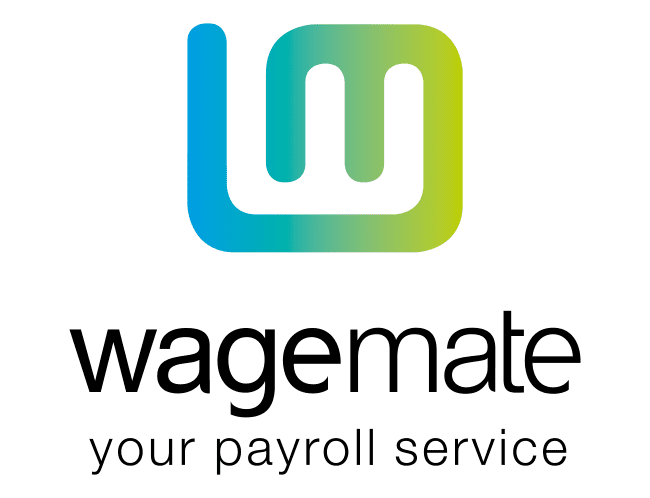Payroll changes in 2020-21
Daniel Hull, director at Wagemate | Your Payroll Service writes about changes to laws and rules affecting payroll in 2021/21:
This has been a busy year for payroll departments across the UK. Here are the big developments that affected them.
Coronavirus Job Retention Scheme (CJRS)
As the industry was preparing for new measures to be introduced in the current tax year, COVID-19 struck and the CJRS was introduced, placing a huge burden of work on UK payroll professionals.
Initial scheme
On 20 March, the government announced the introduction of the CJRS in an effort to help employers avoid mass redundancies as a result of the pandemic. Details of the scheme were scant at the time, but since then HMRC has updated its guidance on a regular basis.
The key points to the CJRS were:
- The government would cover 80% of an employee’s wages up to a maximum of £2,500 a month if the employer put them on furlough, rather than making them redundant.
- The government would also cover the employer’s NI and statutory employer pension contributions.
- The employee had to have been on the payroll before 28 February.
- The employee had to be informed they were being put onto furlough, after which time, they could not carry out any work for the employer – although the legislation did not state they could not get another job.
- The employer could top up the salary to 100% of the employee’s usual salary but was under no obligation to do so.
- Claims would be submitted to HMRC via a new online portal and HMRC would aim to pay within six working days.
- Employees who had been made redundant before the 28 February could be brought back to work, then be put on furlough.
There were some inconsistencies in the legislation and various aspects were unclear. On 15 April, the Chancellor issued a Treasury Direction to HMRC in relation to the CJRS. A second Treasury Direction was issued on 20 May clarifying and remedying some of the inconsistencies between the original Treasury Direction and the various guidance documents published subsequently; these Directions only covered the period up to 30 June.
HMRC changed its guidance after 15 April, to say that employees could be eligible for the scheme if they were employed by 19 March 2020 and had been submitted to HMRC on a FPS submission before that date.
During this time, HMRC confirmed that annual paid directors who run its payroll every March were not eligible for the CJRS, unless they had submitted their FPS return on or before 19 March 2020.
Flexi furlough
A further Treasury Direction was published on 26 June, setting out more technical details of the CJRS and how it will operate between 1 July and 31 October when, as previously communicated, it is due to end. We think it unlikely that the scheme will operate beyond that point.
From 1 July, employers were able to bring back to work employees who have been previously furloughed for any amount of time and any shift pattern, while still being able to claim under the scheme for normal hours not worked by an employee (with the employer paying for hours that are worked). The introduction of ‘flexible furloughing’ had originally been planned for 1 August, but was brought forward by a month to give employers increased scope to manage their workforce as lockdown eases.
The scheme was closed to new entrants from 30 June. From that point onwards, employers were only able to furlough employees they have furloughed for a full three-week period at any time between 1 March 2020 and 30 June. This meant that the final date by which an employer could have furloughed an employee for the first time was 10 June, in order for the current three-week furlough period to be completed by 30 June. As such, with the exception of employees returning from certain types of family leave, military reservists returning from a period of active duty or employees who TUPE transferred to a new employer after 10 June (see below), the scheme is now closed to new entrants.
From 1 August, the level of grant under the scheme will be slowly tapered to reflect the government’s expectation that people should be returning to work. Furloughed employees will continue to be entitled to receive the current 80% of their wages (subject to the £2,500 monthly cap) through to the end of October, but from August employers will be expected to contribute towards this. The government’s contribution towards the employee’s pay when on furlough will remain at 80%, but employers will be required to pay employer NI and pension contributions.
In September, employers will also be required to pay 10% of wages and the government will contribute 70%. In October, the employer contribution will increase to 20% with the government’s contribution falling to 60%.

Other changes in the payroll industry in 2020/21
With the CJRS taking centre stage, it is important to note there have been some other big changes to payroll for the current tax year.
Employment Allowance (EA)
Eligible businesses can reduce their annual NICs by up to £4,000 with EA. This has increased from £3,000 in the 2019/20 tax year.
From tax year 2020/21, EA can only be claimed by businesses and charities with an Employer NICs bill below £100,000 in the previous tax year; in the past, all-sized businesses could apply if they qualified, regardless of their NICs bill in the previous year.
From tax year 2020/2021, you must send an EPS in month one if you are continuing to claim EA.
Business are unable to claim EA if:
- The EA claim would push it above the de minimis state aid threshold applicable to their industry sector.
- You are the director and the only employee paid above the Secondary Threshold.
- You employ someone for personal, household, or domestic work (this does not apply to care/support workers).
- You are a public body or business doing more than half your work in the public sector unless you are a charity.
- You are a service company working under IR35 rules.
Statutory Parental Bereavement Pay (SPBP)
Employees will now be entitled to two weeks’ leave following the death of a child which, subject to meeting the relevant criteria, will be paid at the statutory rate.
- Leave can be taken as a two-week period or split into two separate individual weeks.
- Employees can have more than one instance of SPBP at any time.
- Eligibility starts from 24 weeks of pregnancy.
- Leave must be taken within 56 weeks of death.
- 26 weeks of employment service is required for eligibility.
Company car changes
Tariffs have changed to encourage the use of electric and low-emissions vehicles.
For cars first registered from 6 April, 2020, most company car tax rates will be reduced by two percentage points, with a new zero percentage rate for pure electric vehicles (EVs).
The percentages will then be increased by one percentage point for each of the tax years 2021 to 2022 and 2022 to 2023.
In the tax year 2022 to 2023, the increase will bring the percentages back to their published rates in existing legislation.
Termination payments
Employers must pay Class 1A NICs on any part of a termination (redundancy) payment exceeding the £30,000 threshold.
Sporting testimonials
A sportsperson may qualify for a one-off tax exemption of £100,000 on the income received if:
- They are an employed sportsperson
Or:
- They are a previously employed sportsperson and the testimonial relates to that employment.
- The testimonial or benefit match is non-contractual or non-customary.
- The events are held during a single testimonial or testimonial year.
- The events are controlled by an independent person.
- There has been no previous testimonial income to which the exemption is applied.
Off-Payroll working
Following the last-minute announcement by the government, in-light of the COVID-19 outbreak, the legislation for the implementation of Off-Payroll working in the private sector will be delayed until April 2021.
Commonly known as IR35, new legislation will allow HMRC to collect tax and NI from the employer, where a worker provides their services through an intermediary.
The fee payer, public authority, agency or third-party who is responsible for paying the worker’s intermediary must:
- Calculate a deemed direct payment to account for the employment taxes associated with the contract.
- Deduct those taxes from the payment to the worker’s intermediary.
- Report taxes deducted to HMRC through Real Time Information (RTI) Full Payment Submissions (FPS).
- Pay the relevant employer’s NICs.
The fee payer, public authority, agency or third-party who is responsible for paying the worker’s intermediary must NOT:
- Deduct student loan repayments.
- Deduct Auto-enrolment contributions.
- Pay statutory payments.
For more information please visit www.wagemate.com
or call Wagemate on 03330 102 102












